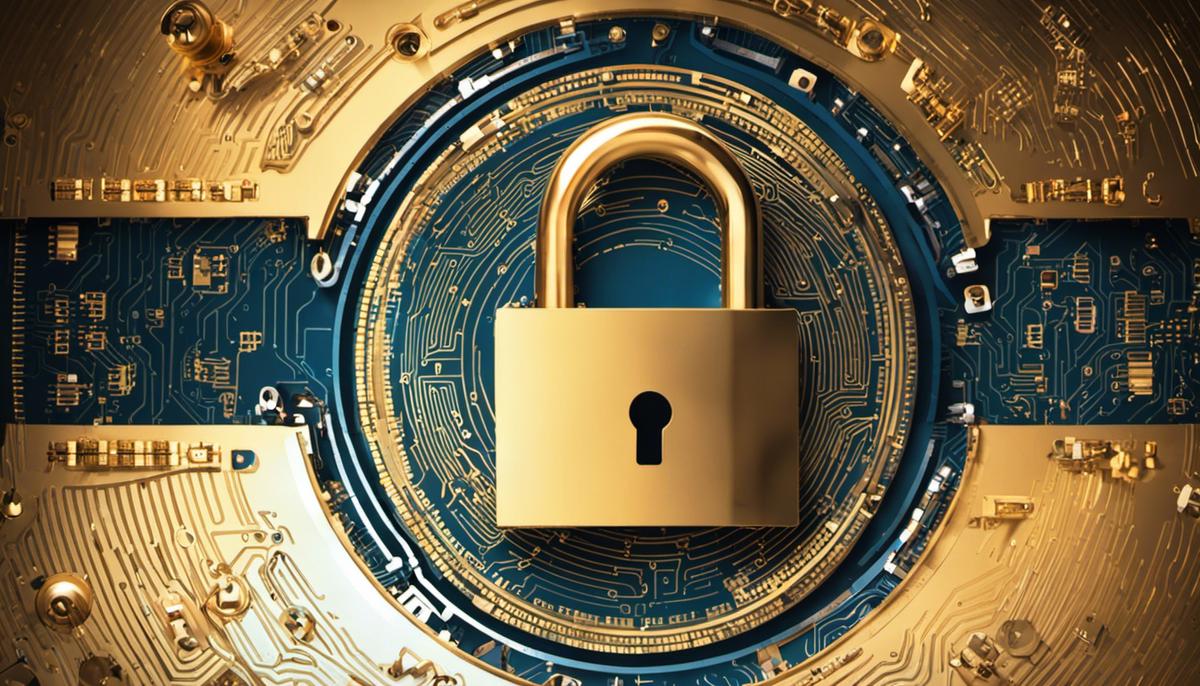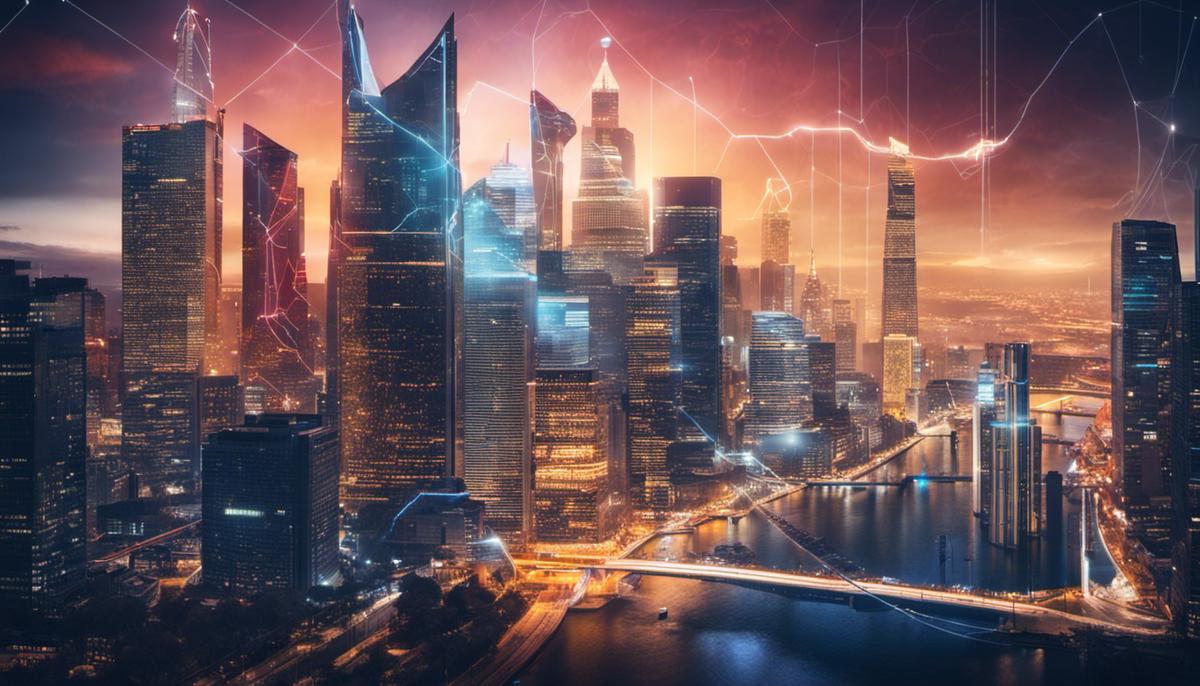From protecting our privacy and data to safeguarding digital assets, the role of cybersecurity solutions is indeed indispensable. This exploration will delve into the complexities of cybersecurity, allowing us to unravel its many facets, from understanding its many solutions keeping abreast with the latest technologies and trends, to adopting them and envisioning their future.
Overview of Cybersecurity
Current State of Cybersecurity: Why It Really Matters
Cybersecurity has always been an essential aspect of today’s digital world, but its importance has skyrocketed in recent years and has deeply integrated into every facet of modern life. With an increasing amount of personal and professional information existing in the digital realm, the emphasis on effective cybersecurity cannot be overstated.
Presently, cybersecurity is playing catch-up with the rapid advancement of technology. It’s a thrilling yet daunting chess match, as hackers continually evolve their methodologies and systems work relentlessly to stay one step ahead. The landscape has largely been shaped by the acceleration of digital transformation due to the COVID-19 pandemic, leading to expansive digitally connected online networks.
These recent developments have prompted a seismic shift in the cybersecurity industry. It has paved the way for innovative technologies like artificial intelligence (AI) and machine learning (ML) to strengthen security infrastructure. These technologies enable predictive analysis, identifying potential threats before they manifest, significantly improving overall security measures.
However, this dynamic scenario has also attracted cybercriminals, turning the digital landscape into a battleground. Cyber threats such as phishing, ransomware, and data breaches have become more sophisticated, targeted, and damaging. The increase in remote work has resulted in a significant surge in attacks, emphasizing the need for robust cybersecurity solutions for businesses of every size across all industries.
The introduction of strict data protection regulations like the General Data Protection Regulation (GDPR) and California Consumer Privacy Act (CCPA) demonstrate how seriously governments are taking the issue. This has magnified the importance of cybersecurity compliance for businesses worldwide, where non-compliance carries severe penalties.
The current state of cybersecurity illustrates the escalating war between security measures and digital threats—an ongoing battle where time and information are of the essence.
In this context, the importance of cybersecurity is multifaceted. It’s not just about protecting data; it’s about securing trust. Companies rely on cybersecurity to establish their credibility, and consumers rely on it to protect their personal information. Both sides understand the potential devastation that a breach can cause, both financially and reputationally, hence the emphasis on a strong cybersecurity posture.
Furthermore, cybersecurity is vital to maintaining the integrity of critical infrastructure sectors such as health, banking, and energy. These sectors heavily rely on robust security measures to ensure service continuity and avert disastrous consequences.
In conclusion, the state of cybersecurity today calls for a proactive rather than a reactive approach. One that integrates the latest technologies, complies with stringent regulations and educates individuals and businesses about the importance of safeguarding their digital presence. The future of cybersecurity, then, isn’t an option; it’s a necessity, continually adapting to confront an ever-evolving landscape of threats.

Understanding Cybersecurity Solutions
Understanding the core components of effective cybersecurity solutions is central to mounting a robust defense against increasingly sophisticated and numerous cyber threats. Amidst the landscape previously described – where rampant technological advancements and the wider adoption of remote work significantly heighten vulnerability – it is essential to delve into what constitutes a truly robust cybersecurity solution.
A solid cybersecurity foundation starts with comprehensive Vulnerability Management. This involves regular scanning for weaknesses in IT systems, including applications, operating systems, and network equipment. Quick identification and effective patch management are critical to defending against the exploitation of vulnerabilities.
Further reinforcing the cybersecurity architecture is Threat Intelligence. This involves gathering, analyzing, and implementing data about cyber threat landscapes. It aims to forecast potential future threats, keeping cybersecurity strategies one step ahead of attackers.
Then, there is Security Information and Event Management (SIEM). A comprehensive SIEM solution centralizes data, correlates events, and provides real-time analysis of security alerts generated by applications and network hardware, which enables real-time, proactive defense mechanisms.
Intrusion Detection Systems (IDS) and Intrusion Prevention Systems (IPS) are pivotal in real-time protection. IDS identifies malicious activities in the network; IPS, on the other hand, proactively takes steps to block identified threats. Both are critical in maintaining the integrity and safety of network systems.
On top of these, adding an extra layer of security comes in the form of Firewalls. As gateways, they help to establish barriers between trusted internal networks and untrusted external networks, permitting or blocking data packets based on a set of security rules.
But even the most robust cybersecurity technology cannot solely protect against all threats. That’s where User Training and Awareness Programs come in, as human error remains a significant weakness in any cybersecurity plan. Training users to recognize and respond correctly to cyber threats can drastically reduce the likelihood of successful attacks.
Furthermore, implementing a strong Identity and Access Management (IAM) strategy is key to ensuring that only authorized individuals can access sensitive data. IAM includes password management, two-factor authentication, biometric data, and digital certificates.
Lastly, comprehensive Disaster Recovery and Business Continuity Planning (DR/BCP) strategies ensure that if a breach happens, the impact on business operations is minimal, and recovery is swift. Some key DR/BCP components include regular backups, redundancy plans, and clear guidelines for recovery operations.
Undeniably, the cybersecurity landscape is ever-evolving, as are the threats that lurk within it. Acknowledging this constant flux and aligning cybersecurity practices accordingly is vital. An integrated strategy incorporating the components mentioned above can create a robust defense, enabling organizations to navigate the digital world securely and confidently.

Latest Cybersecurity Technologies and Trends
Embracing the Shift to Zero Trust Architecture
As economies continue to digitize, moving beyond the confines of firewall-based security and towards a “zero trust” architecture is gaining momentum. Recognizing that threats can emerge from both inside and outside of an organization, zero trust operates under the concept of ‘never trust, always verify.’ This necessitates verification for every individual seeking access to resources, regardless of their location or network origin, transforming the way companies safeguard their digital environments.
Cloud Security Expansion
The escalation of cloud adoption necessitates a robust, concerted emphasis on cloud security. As organizations shift from on-premise data centers to cloud platforms, the challenge of securing these digital assets extends far beyond traditional perimeters. Contending with cloud-specific challenges like misconfigurations, inadequate change control, and lack of visibility into cloud resources, security teams are expected to evolve and master new tools for cloud-centric threat detection and response.
Greater Emphasis on Cyber Hygiene
Maintaining proper cyber hygiene – employing basic measures like regular system updates and patches, proper password management, and routine backups – is gaining significance. Cybersecurity teams are advocating for investments in automated patch management systems and improved cyber hygiene training initiatives.
Growing Use of Blockchain in Cybersecurity
Blockchain, given its inherent characteristics of decentralization, transparency, and immutability, is emerging as an impactful technology in ensuring data security. It’s being used to prevent fraudulent activities by providing proof of authenticity for digital transactions and assuring data integrity across networks.
Rise of Quantum Computing Threats
While still nascent, quantum computing represents a major emerging threat to cybersecurity. If realized to its full potential, it could dismantle current encryption methods, rendering them ineffective. Industry players are already gearing up to contend with this, exploring new cryptographic methods resilient to quantum attacks – a field called ‘post-quantum cryptography.’
Automation and Orchestration
Security teams are leveraging automation and orchestration to improve response time and reduce human error. Automation tools can carry out routine tasks, freeing up cybersecurity professionals to focus on more intricate problems. Orchestration, on the other hand, connects different security tools to coordinate complex workflows, improving efficiency and effectiveness.
At the end of the day, transitioning to these current trends in cybersecurity isn’t an option but a necessity driven by the relentless and rapid digital transformation. With these adaptations, we are edging closer to constructing formidable defenses capable of thwarting modern real-time cyber threats. Stay safe in the digital world!

Adopting Cybersecurity Solutions
As the digital landscape evolves, it’s crucial for companies to stay up-to-date on the most effective cybersecurity solutions. The path of adopting and implementing cybersecurity solutions starts with embracing emerging trends that are shaping the future of cybersecurity.
One such trend is the expansion of cloud security. As more businesses migrate their data and operations to the cloud, there’s an increasing need for robust cloud security architectures. Traditional security methods are often unsuitable for cloud environments – leaving room for innovative solutions like Cloud Access Security Brokers (CASBs) and Secure Access Service Edge (SASE) that are designed to secure data across distributed environments.
Maintenance of cyber hygiene has emerged as a new emphasis point. It’s no longer enough to have high-end firewalls and IDS systems. On the contrary, everyday practices must be in place to keep cybersecurity in check. These practices include software updates, password management, and the use of multi-factor authentication, among others.
Another trend that is hard to ignore is the growing use of blockchain in cybersecurity. Blockchain, best known for powering cryptocurrencies like Bitcoin, is a distributed ledger technology that has applications in providing security against data tampering. Given its immutable nature, blockchain can be employed to establish secure communication channels, verify identities, and protect data integrity.
When it comes to threats, quantum computing is shaping up to be a potential game-changer in cybersecurity. While quantum computers can vastly improve encryption algorithms and systems, they also pose significant risks. A quantum computer could crack most contemporary encryption algorithms in seconds, rendering all existing cybersecurity measures obsolete. Businesses need to monitor advancements in quantum computing closely and plan for post-quantum cryptography.
Finally, it’s important to mention the rise of automation and orchestration in cybersecurity. Automating repetitive tasks allows security teams to focus on more complex, strategic work while orchestration integrates various security tools, improving detection and response times. Automation is also vital in maintaining compliance, handling security audits, and reducing the risk of human error.
Adopting and implementing these cybersecurity solutions isn’t just about purchasing a tool or subscribing to a service. Companies need a clear strategy, including risk management, internal cybersecurity culture development, and investment in cybersecurity skills. When done right, it helps companies gain the technical and human resources they need to defend against digital threats.
All in all, in such a rapidly evolving field, understanding the trends, adopting appropriate solutions, and improving cybersecurity readiness is a never-ending process, but it’s a journey that every company must embark on to stay resilient in today’s relentless digital world.

Future of Cybersecurity Solutions
The continuous evolution of cybersecurity is set to prompt radical changes in the way IT ecosystems are protected. Looking forward, some emerging trends are certain to alter the landscape dramatically.
Security in the Internet of Things (IoT) era presents tantalizing challenges and opportunities. With billions of interconnected things on the horizon, identifying vulnerabilities and managing threats in real time will be crucial. Secure design principles and security analytics, coupled with AI, will play a pivotal role in managing the enormity and complexity IoT brings.
In the face of increasingly complex attacks, zero-trust architectures are gaining traction. This model, emphasizing the principle of “never trust, always verify,” provides a more granular approach to cybersecurity. It moves away from a perimeter defense model, addressing security at every level in the network.
Look out, too, for the rise of Cybersecurity Mesh as businesses continue to morph into distributed entities. Cyberspace gives organizations global reach but it also opens a Pandora’s box of threats. Cybersecurity Mesh is an architectural approach to scalable, flexible, and reliable cybersecurity control. Companies or cybersecurity teams can create a structured security perimeter around any individual or digital entity, making it easier to manage and mitigate risks.
The Secure Access Service Edge (SASE) also emerges as a desired model. This architecture amalgamates wide-area networking and network security services into a single cloud-based service model. By doing this, it enables secure and speedy network connections regardless of employee or office location.
Cybersecurity, moving into the future, will also place a spotlight on privacy-enhancing computation. This tech is designed to protect data while it’s being used, as opposed to when it’s at rest or in transit. Building upon homomorphic encryption and multi-party computation, privacy-enhancing computation offers enhanced protection, securing data even as it’s processed.
The power of 5G will bring revolutionary changes in speed and connectivity but also poses a horde of vulnerabilities and threats. Countermeasures, including advanced AI, intelligent threat modeling, and rigorous security standards, will need to be implemented to outsmart cybercriminals.
Finally, the integration of behavioral analytics will become more mainstream. This technology can detect unusual activities or patterns, providing an early warning system against potential data breaches. By understanding and anticipating human behavior, it will enable prediction, prevention, and swift response to threats in real-time.
Regardless of the innovation or new defenses that are introduced, one thing is clear: the need to keep pace with cyber threats will continue to drive novel and robust cybersecurity solutions. The future, though fraught with challenges, presents a battlefield liberally laced with opportunities. Cybersecurity will undeniably be an exciting domain to watch and engage in as it shapes the business, social, and political landscapes. The story is to be continued…

Embracing the future of cybersecurity is more than just understanding the surge of new technologies. It involves addressing foreseeable ethical and regulatory issues head-on while promoting constant innovation and fostering a culture of collaborative security efforts. Along this journey, we will learn that the road to a safer internet does not end at technologies alone. Instead, it transcends into creating a global consciousness where every internet user is well-informed, well-defended, and actively participates in securing their little corner of the web. To this end, one can assert that our collective efforts in comprehending, adapting, and improving cybersecurity solutions are the defining steps toward a digitally secure future.